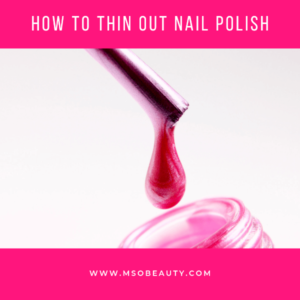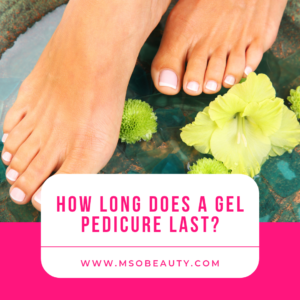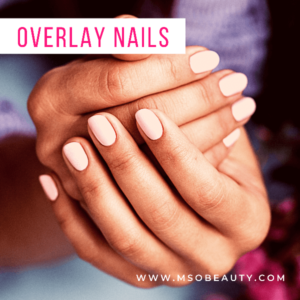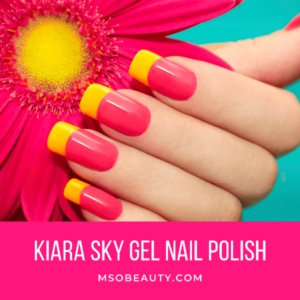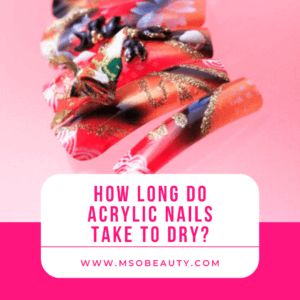Is polygel bad for your nails? No! Polygel is safe for your nails and health.
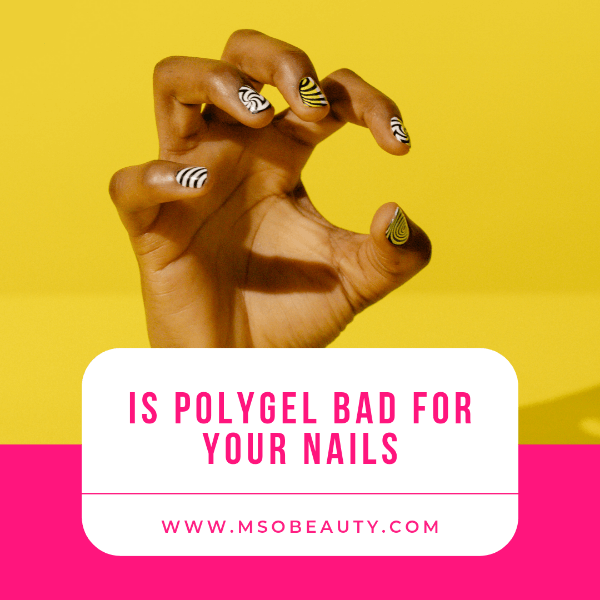
Polygel is a new and revolutionary product that takes the best qualities from builder gels and acrylics. In fact, it’s safer than many other nail extension materials.
Here’s why:
Polygel is usually 7-free
According to Gelish, the company that invented the original Polygel, this material is non-toxic and 7-free.
It’s completely free of the 7 most harmful ingredients.
Gelish Polygel Trial Kit
Other popular polygel brands, like Beetles, Modelones, and Morovan, also manufacture at least 7-free polygel nail kits.
So you can rest assured they are safe for your health and aren’t bad for your nails.
Polygel is monomer-free
Unlike acrylic nails, polygel doesn’t require the use of a monomer.
Monomer in acrylics is needed as a binding agent to create a mixture paste with acrylic powder.
The acrylic monomer has a very strong, unpleasant, and toxic odor.
The respiratory system is irritated by the monomer vapor. Inhaling it repeatedly can be dangerous. Plus it can cause contact dermatitis.
If you have an intolerance to strong smells or an allergy you may want to avoid acrylic nails where the monomer is a necessary component.
That’s why polygel is an excellent alternative to acrylic nails.
Polygel has all the ingredients already pre-mixed. There’s no need to use any monomer with powders or worry about the right powder to monomer ratio.
Polygel comes ready to use out of the tube.
This material only requires the use of a slip solution.
Don’t confuse it with monomer!
It’s a completely different material.
Slip solution is not needed to bind any powders together.
It’s only necessary to smooth out the polygel and move it around.
Slip solution is not bad for your nails either
Slip solution is also 7-free and is mostly made of Isopropyl Alcohol, or rubbing alcohol.
Isopropyl Alcohol and rubbing alcohol are safe and are used in healthcare and cosmetics.
Nail technicians often use these two types of alcohol for cleansing the bare natural nail plate.
So polygel slip solution doesn’t carry any harmful ingredients that can be bad for your nails.
Polygel is odorless
Unlike acrylic monomer, polygel is odorless.
It doesn’t have any strong or unpleasant smell. Nor does it release any toxic fumes into the air that you’re breathing.
It’s great for people who are sensitive to smells. They can work with it safely.
Polygel doesn’t release any toxic fumes during the polymerization process under the lamp either.
In addition to that, the slip solution is almost odorless too.
It usually has no smell and if it does then there’s only a faint smell that reminds you of a spa or a nice perfume.
Polygel is lightweight and causes no pressure on the nail plate
Some people who use acrylic nails complain that acrylic extension material causes a tightening sensation with considerable pain and discomfort for the natural nail plate.
Polygel is very light on your nail plate and won’t cause any tightening or tenderness.
It’s a lot lighter than acrylics or gels.
In fact, Polygel’s original inventor Gelish promises that this material is feather-light on the nails.
According to Gelish, it’s 23% lighter than acrylics and 16% lighter than hard gels, but with the same level of durability.
Even though it’s a very strong nail extension material, Polygel doesn’t force any pressure on the nail plate after you apply and cure it.
You won’t have a feeling of a heavy weight stuck to your fingers.
No heat spikes under the lamp
Some gel nail polishes, and especially gel base coats are known to create heat spikes under the lamp.
A heat spike is an abrupt increase of the temperature of nail material while you’re curing it with a UV/LED lamp. The reason for heat spikes is the polymerization reaction that gives off heat.
Heat spikes can be very unpleasant and painful.
Polygel, if applied right, will never cause heat spikes under the lamp.
Heat spikes with this material are extremely rare and can only occur if the layer of polygel you are trying to apply is abnormally thick.
Simply speaking, the more material you pile on the more polymerization bonds are formed and the greater the heat they give off.
Just make sure you don’t apply any nail material, including polygel, in an overly thick layer.
It’s always better to add more product in several increments than to cure a huge pile in one go.
No airborne dust
Polygel filings are 30% heavier than the dust from filing acrylic and hard gel nails.
They are heavier than air and simply fall to the table.
You’ll be safe from inhaling them.
So Polygel produces no airborne dust that can be hazardous for your health.
Polygel is not bad for the skin around the nails either — there’s no contact with the skin
If you apply polygel to your nails in the right way there won’t be any contact of this material with the surrounding skin and the cuticles.
This makes the probability of allergy or contact dermatitis lower than when you use gel polish, builder gels, or acrylics.
Unlike builder gel, which is very runny, polygel isn’t runny at all.
It’s a viscous material that stays where you put it.
You can only distribute it with a brush with the help of slip solution.
Apply it at 1-1.5 mm from cuticles and it will never come in contact with your skin unless you push it there with the brush.
Since polygel isn’t runny it won’t run into the cuticles or the surrounding skin.
The absence of skin contact makes it safer for people with sensitivities and allergies than a builder gel.
No soaking off with acetone needed
Unlike acrylics or gel nail polish, polygel can’t be soaked off with acetone.
It can only be removed by being filed off mechanically. For example, with a nail file or a nail drill.
But don’t fret if you want to remove it at home and don’t have a nail drill on hand or if you’re not too skilled with using a nail drill.
You can easily remove it by gently filing it down, following the instructions recommended by Gelish, the inventor of the original Polygel.
If you do everything right and file them off gently the polygel removal process won’t be bad for your nails and won’t do any harm to the natural nail plate.
Whereas acetone is known to dehydrate the nail plate and irritate the surrounding skin, especially if you keep it on the nails for a long time needed for the soaking-off process.
To wrap up, polygel is absolutely not bad for your nails. It’s the nail industry’s latest invention. In fact, polygel is probably the safest nail extension material.
Recommended reading:
Best Polygel Nail Kit Reviews And How To Apply Polygel At Home
Best Glitter Polygel Nail Kits
Best And Safest Neon Polygel Nail Kits
Best Polygel Dual Forms For Perfect Nail Extensions
How To Dry Polygel Without A UV Light
Can I Use Water As A Slip Solution For Polygel?
Overlay Nails 101: Acrylic And Gel Nail Overlay On Natural Nails – The Ultimate Guide
Best Professional Gel Nail Polish Brands Used In Salons
Non-Toxic Gel Nail Polish Brands 101: Choose The Safest Gel Nail Polish
Best No Light Gel Polish — Gel Nail Polish Without UV Light
Best Gel Base And Top Coat: The Updated List Of The Best Gel Nail Base And Top Coat Sets
Best Small Salon Reception Desk For A Tight Space: Make An Amazing First Impression!


